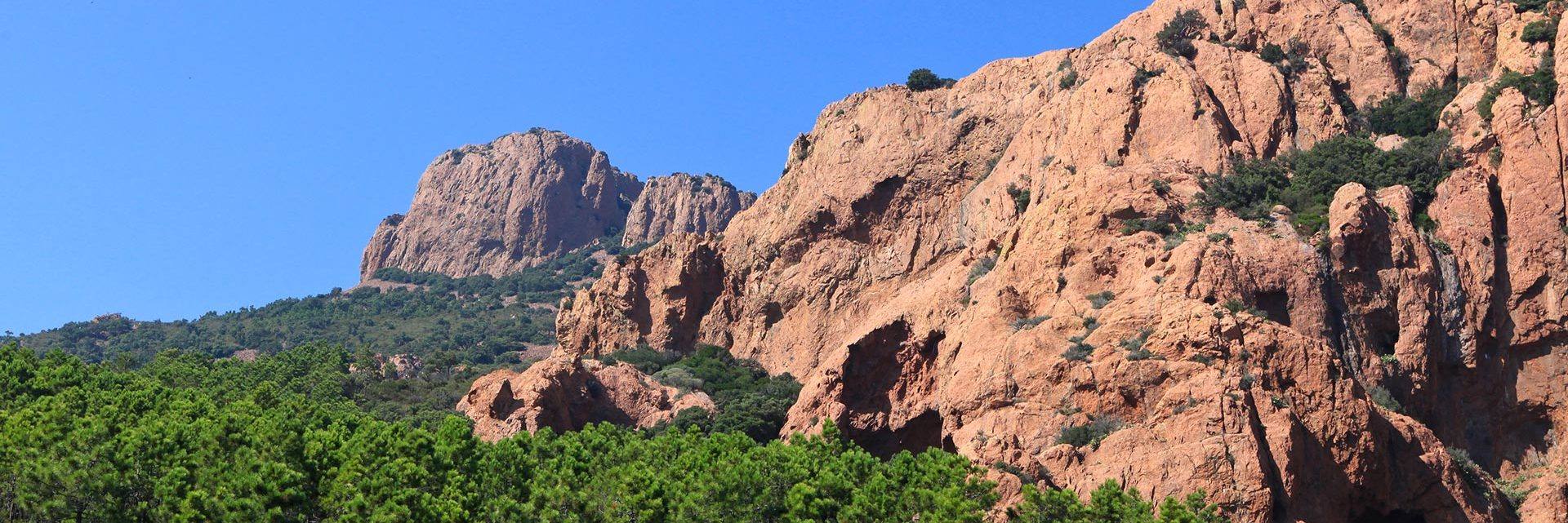With its red porphyry rock, the Estérel Massif has a unique appearance. Rising up between Saint-Raphaël (83) and Mandelieu (06), the unspoiled landscapes are magnificent: a line of sheer, narrow gorges and ragged crests. Striking against the azure blue sky, it majestically overlooks the Mediterranean, certainly for better diving into the marine-blue sea. The most spectacular part of the coast is the peak of the Cap Roux, where the rock hurtles down 452m into the sea.
The flora is rich and diverse. Despite forest fires, pine, chestnut, hornbeam, fig and olive trees grow in abundance, rubbing shoulders with palm trees, mimosa, eucalyptus and imported tropical plants that are thriving thanks to the mild climate. Criss-crossed by numerous hiking trails, it is a wonderful place for hiking or biking. Visitors can also explore the rocky inlets from the sea, in a boat or canoe trip.
At the bottom of the mountains is the ‘Corniche d’Or’, named thus for the beauty of its surroundings. The carved coastline provides beaches and small coves. The miniscule ‘Ile d’Or’ contains a strange tower built in the 19th century by an odd fellow who claimed to be the King of the Island. The tower also inspired Hergé for the cover of a famous comic: Tintin!
Explore the region





